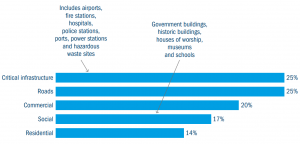Voluntary plastic goals have yielded little meaningful change on plastic production and recycling. But forthcoming regulatory changes will heighten both the risks and opportunities companies – and investors – must navigate.
Despite a flurry of attention in recent years from consumers, companies, NGOs and governments, global plastic production has continued its upward trajectory – along with the associated waste and pollution issues. In our view, 2024-25 may be an inflection point for this theme, with numerous milestones coming together: deadlines for voluntary corporate goals and for incoming regulations, the potential finalisation of a UN Plastics Treaty, and the ramp up of new recycled plastic capacity from chemical recycling.
Voluntary goals have yielded little progress…
Since 2020 consumer-facing companies have, under the guise of the Ellen MacArthur Foundation and initiatives such as the Plastics Pact, made voluntary pledges to increase recycled plastic use. In practice, however, progress has been slow. For most companies there remains a big gap between current levels of recycled plastic adoption and those required under 2025 goals (which are typically to have 25% recycled content). There are numerous reasons for this, including increases in petrochemical capacity in China, which has driven lower-cost plastic imports; ongoing challenges in recycled plastic collection, leading to a lack of availability, particularly of food-grade and flexible plastics; and last but not least, inflation, which has made it more challenging for companies to commit to adopt price premiums for recycled plastic. As a result, most consumer companies and packaging companies remain off track versus the 2025 goals (Figure 1).
Figure 1: slow progress on recycled plastic use by the top 20 fast-moving consumer goods companies

Source: Ellen Macarthur Foundation, Company reports, CTI analysis, 2024
... setting the scene for increased regulation
The lack of progress does not mean the plastic issue will diminish – rather it continues to gain more attention. This can be seen in the broad, global buy-in to the need for adoption of a UN Plastics Treaty on an accelerated timeline. It can also be seen in the increase in the number of regulations mandating thresholds for recycled plastic, taxes on virgin plastic, and other recent regulations such as the EU’s Packaging and Packaging Waste Regulations and California’s Plastic Pollution Prevention and Packaging Producer Responsibility Act.
The scale of this shift is significant. Markets from Australia to India and Europe to several US states, which collectively account for 30% of global GDP, have 2025 recycled plastic content requirements for packaging. Until now companies have faced few consequences for not meeting voluntary goals, but more “sticks” loom on the horizon (Figure 2).
Figure 1:evolution from voluntary pledges to regulatory-led directives
Source: Columbia Threadneedle analysis, February 2024
What are the solutions?
In our view the negative consumer sentiment around plastic, and the flurry of approaching deadlines for regulatory and voluntary goals, will increase costs for consumer-facing companies, particularly those that are lagging. Costs may be in the form of increased price premiums for recycled plastic, investments to change packing lines (for example, from flexible plastic to flexible paper), and taxes and fees to fund investments in plastic recycling, such as through extended producer responsibility1(EPR) schemes.
Alongside this we should see more focus on potential solutions, namely material substitution, improved waste sorting and chemical recycling.
Material substitution
Substitution of plastic packaging with other materials is likely to accelerate over the rest of the decade – particularly of plastics with low recyclability, plastics that require specialised recycling infrastructure, and types of plastic with low availability of recycled material.
There are several catalysts for this shift:
Recyclability If plastic recycling rates don’t improve, plastic packaging may not meet the thresholds for continued acceptability on the market
Pricing Taxes on virgin plastic and EPR fees for plastic packaging may narrow the price gap between plastic and other materials
Availability If recycled plastic continues to be in short supply, this may lead to switching
Sentiment Consumer sentiment continues to be negative on plastic packaging
The substitution trend is likely to benefit paper and pulp, aluminium and glass packagers, though we expect switching from plastic to paper to be a growth area. In making this switch companies will need to mitigate other potential negative impacts including on deforestation, biodiversity and water pollution.
Investment in sorting technologies
Increasing plastic recycling rates relies on consumer behaviour change, as well as improved sorting and collections. US recycling rates remain stubbornly low – around 21%2, with the percentage of material actually recycled into new products being even lower. This is likely to gradually change, however, with policies such as EPR across more states helping to finance improved recycling infrastructure. Republic Services3 announced investment in several “polymer centers” focused on high quality sorting of waste plastics, which should lead to improved material quality and better economics.
Even in countries with higher recycling rates, investment in sorting will be needed. In the UK, Veolia highlighted that achieving 50% recycled plastic in packaging would require 10 new plastic sorting facilities and up to 30 more recycling facilities4. Increasing investment in automation and sorting, such as via machines offered by Norwegian firm Tomra, will be important in improving recycling economics and achieving higher recycling rates.
Chemical recycling
The low availability of food-grade recycled plastic, combined with large quantities of unrecyclable plastic waste (due to colorants or contamination, for instance), is focusing attention on chemical recycling technologies, which have the potential to address both challenges. Chemical recycling is a group of diverse recycling approaches such as methanolysis, pyrolysis and enzymatic hydrolysis. In contrast to mechanical recycling where materials are washed, shredded, melted and re-formed to resin, chemical recycling uses more intensive processes to break down plastic waste to monomer level or to pyrolysis oil, a petrochemical feedstock which can be further processed and used to displace naphtha in new plastics production.
Chemical recycling technologies are a key component of the strategies that global chemical companies are setting in response to customer demands for circular production and recycled plastic (Figure 3).
Figure 3: targets for recycled polymer production
Source: Company reports, polymer production estimates from the Minderoo Foundation, as at March 2024.
The mention of specific stocks is not a recommendation to deal
While promising, chemical recycling is not without potential challenges. Further regulatory clarity is needed, as is a focus on reducing greenhouse gas emissions for some forms of chemical recycling such as pyrolysis. Recent analysis from the EU Joint Research Centre highlighted the higher emissions, on a lifecycle basis, of pyrolysis compared with mechanical recycling and other chemical recycling technologies (Figure 4). Newer innovations such as microwave-assisted pyrolysis and hydrothermal pyrolysis may hold promise to reduce emissions.
Clarity on policy support for chemical recycling would also aid the scale up of these technologies – including support for a “mass balance” approach to accounting for recycled plastic in companies’ production mix and in product labelling, and clarification as to whether chemically recycled material can count towards recycling targets in the EU.
Despite the challenges, there are positive signs that progress is being made, such as the recent announcement from specialty materials company Eastman that it has begun generating revenue from on-spec production at its facility in Kingsport, Tennessee.
Figure 4: lifecycle emission for recycling technologies, per EU
Source: EU Joint Research Centre, 2024
Conclusion
Undoubtedly, numerous obstacles lie ahead – and these are not to be under-estimated given the slow progress to-date in addressing the plastics challenge. However, 2024-25 could mark the beginning of a shift toward more tangible progress. Such a shift will heighten both the risks and opportunities companies and investors must navigate.





